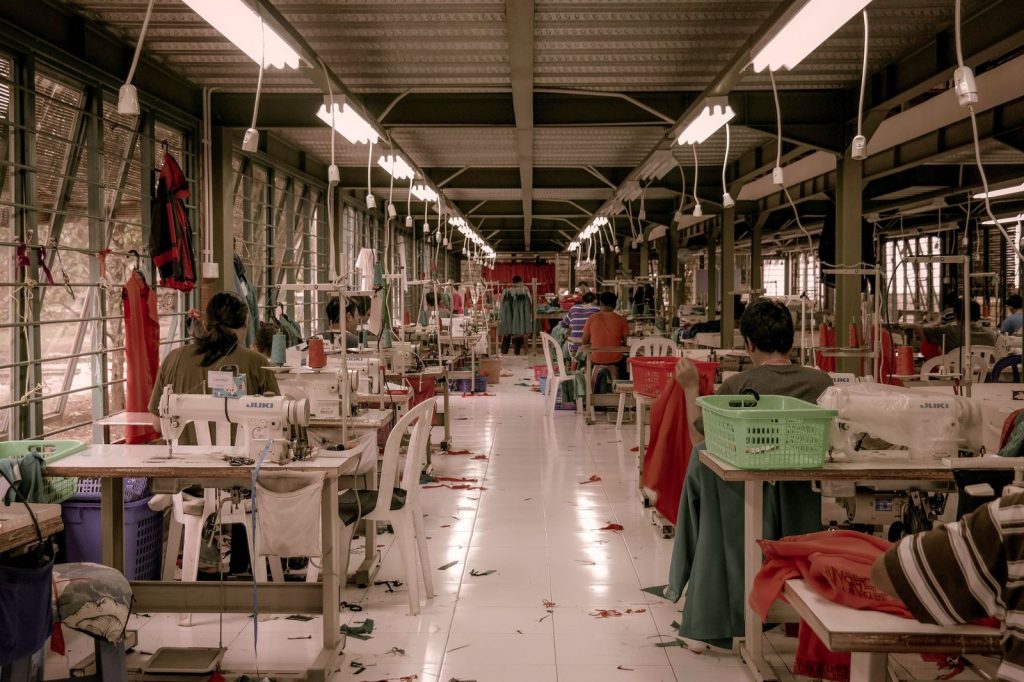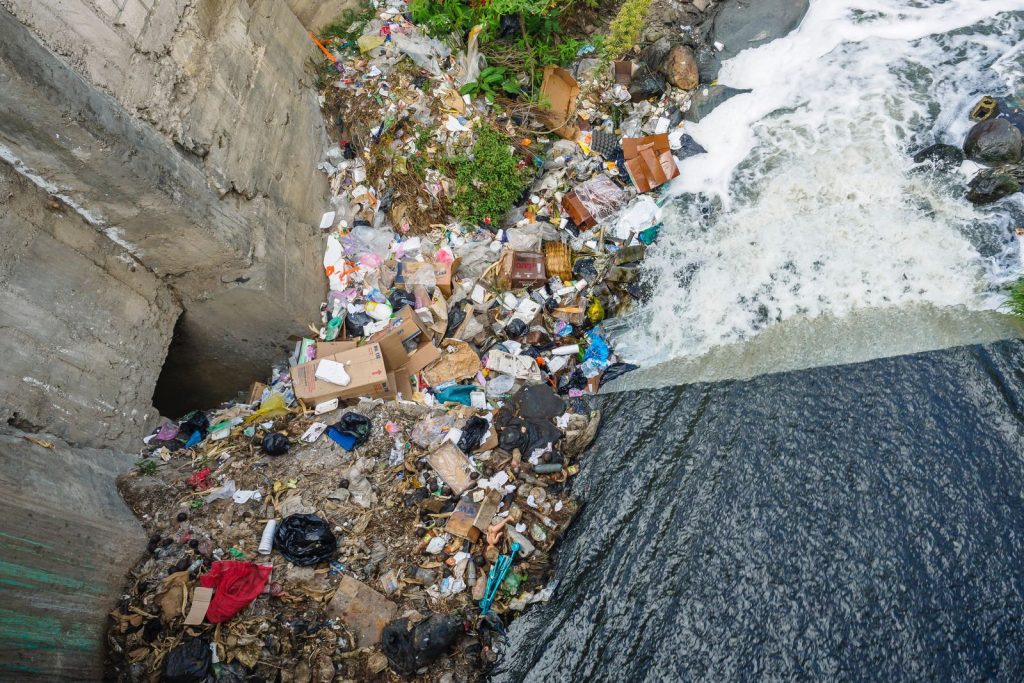Beyond the Price Tag: What Does Fast Fashion Truly Cost?

Fashion has always had a rapid cycle of trend turnover. Looking across history, there seems to be a perpetually shrinking gap between the obsoletion and reemergence of what’s considered ‘trendy.’ In the past decade, we have seen shoulder pads awaken from their post-80’s grave and watched women reclaim a newly liberated version of the eighteenth-century corset top. Borrowing and blending styles is part of what makes the chaotic evolution of couture so exciting. Fashion is supposed to move fast.
But how fast is too fast?

“Fast fashion” has recently taken on a whole new meaning, emerging as a way for consumers to chase high-fashion trend evolutions at low, affordable market prices. This phenomenon gave rise to the fast-fashion giants of today, including Zara, Forever 21, SHEIN, TopShop and H&M, who have mastered the process of filtering micro-trends through the market at low-cost, high-speed production rates.
Much like the shelf-life of these micro-trends, fast fashion brands are not just fast, but lightning speed, with design-to-store turnarounds as short as just 15 days. This level of efficiency allows the brands to easily switch out their collections and present consumers with a wide variety of constantly up-to-date options.

While the concept sounds alluring, there is much more to this craze than what consumers see while standing in the Zara checkout line. The lack of transparency displayed by these brands leaves consumers with a flurry of unanswered questions– How are these clothes manufactured so quickly? How do these companies profit off of such low market prices? Where do these clothes go once their astonishingly brief shelf-life expires? And most importantly– who is getting the short end of the stick?
The truth is, behind the scenes of these incessantly rapid trends, there is an even more rapid production process, which relies on the use of low-wage, offshore labor and environmentally polluting processes and materials. These truths have been well hidden, but their consequences are tangible; Fashion has become the second most polluting industry worldwide, behind only the oil industry.
Fast fashion shoppers can hardly be blamed, as these multi-million dollar corporations have well succeeded at keeping their consumers in the dark. According to the non-profit group Fashion Revolution, only about 0.8% of the world’s leading brands are transparent about the wages their workers earn. As these retail giants continue to expand, so does the urgency for consumer awareness.
To create change we must first start with the truth:
Social Impacts
“Fast fashion is not free. Someone, somewhere is paying the price.” – Lucy Siegle

The astounding variety of options, speed of trend filtering and cheap market prices which consumers enjoy from fast fashion brands comes at a cost. A study conducted by The Clean Clothes Campaign on a Zara hoodie reveals just how much. The research found that just a little over 1% of the hoodie’s market price ended up back in the pocket’s of the textile factory workers overseas. While Zara racked up a net worth of nearly 13.5 billion US dollars in 2021, the workers who made the actual clothes were not even earning living wages.
This mind-boggling disparity is part of what keeps the wheels of fast fashion turning. Overseas labor is convenient for these companies because it is often cheap, unregulated, and unprotected by union affiliations, largely accounting for why today’s giant brands are able to offer such low market prices while still racking up millions.
With these considerations in mind, the concept of “low-cost fashion” doesn’t actually exist. There is always a cost. And if the consumer isn’t shouldering it, it is more than likely that someone else is.
Environmental Impacts

“When you buy into fast fashion, no matter how many times you wash your clothes they will never be truly clean.” — Laura François
It is not just cheap labor that makes these low market prices possible, but also cheap, low-quality materials. Many fast-fashion brands utilize polyester, acrylic and nylon in excessive quantities, which all contain non-biodegradable microplastics that release significant amounts of carbon emissions into the environment. In fact, according to the UN Environment Program, the fashion industry accounts for nearly 10% of global carbon emissions, more than shipping and aviation combined. These materials can take up to hundreds of years to degrade and can be extremely harmful to animal and marine life. According to the International Union for Conservation of Nature (IUCN), about 35% of all microplastics in the ocean come from synthetic textile materials like these.
Another harmful, low-quality material commonly utilized by fast fashion brands is a cheap alternative to cotton called viscose. Although viscose is made from wood pulp, its production process is far from natural, utilizing high concentrations of toxic chemicals and wastewater, as well as contributing to deforestation. However, even the brands who opt for real cotton over viscose are not necessarily doing better, as high levels of harmful pesticides are used in cotton’s growth process.
Even further than the actual materials used by fast fashion brands is the vast quantity of water that is wasted through their production processes. According the the UN Environment Impact, the fashion industry accounts for about 20% of global wastewater. This waste occurs throughout multiple stages of clothing production, from the overuse of water in the production cotton (the average cotton T‑shirt uses about 700 gallons), to the runoff of dyes and chemicals which contaminate large quantities of freshwater.
The Era of Overconsumption

“What if we started by slowing down and not consuming so much stuff, just because it’s there and cheap and available.” ‑Andrew Morgan
Fashion consumers today are far from minimalistic. The quick pace of trend evolution encourages fashion lovers to constantly update their wardrobes. Switching out old pieces for new, and compiling closets so large they could likely account for the size of their great grandparents and grandparents’ closets combined. In this era of consumption, it seems too much is never enough; and there are facts to prove it. The average consumer today purchases 60% more clothing items than they did fifteen years ago, and on top of this, each item is only kept for half as long.
Fast fashion fuels this fever of overconsumption perfectly; and some may even argue it is what created it. The combination of their too-good-to-be-true market prices and low-quality, short-shelf-life products creates a toxic cycle that spins on and on. Shoppers purchase their clothing in astoundingly large quantities, clothing which they wear and enjoy for only brief periods of time, until either the clothes’ low-quality production begins to give way, or their momentary trendiness is deemed obsolete. What happens next?
The items are discarded and another massive shopping haul is undertaken– the cycle is reignited again. But where do the clothes go once they’re discarded?
With the understanding of how detrimental cheaply produced clothing is to the earth, it is no wonder that purchasing and discarding these items in such high volumes is only expediting the environmental consequences. On top of this, higher consumption levels produce higher demand, a burden which seeps from the top down, all the way to the factory workers overseas, who are being perpetually overworked and underpaid, with no respite in sight.
These social and environmental consequences are thus not only on the conscience of these giant brands, but also their consumers, whose proven overconsumption is the fuel that keeps fast fashion running.
Join the Movement

“As consumers we have so much power to change the world by just being careful in what we buy” ‑Emma Watson
Consumers are not powerless. Far from it. In fact, consumers hold all the power in their hands. Without them, fast fashion brands are nothing. If it is the demand and overconsumption of the consumer that keep fast fashion fast, it could also be the awareness and consciousness of the consumer that slows the damage of fast fashion for good.
The truth may be the first step, but with the truth comes responsibility. It falls on informed fashion consumers to break this cycle, and to inform others so they can do the same. At Paradigme Mode, we are passionate about creating change, but we also understand that being a conscious shopper isn’t always easy. To help, we assembled a few simple tips to guide through your next shopping venture and onward. Let this be your first step into a new fashion community. A community of unity, change and hope. Join the movement with us:
Tips for the conscious shopper

- Check the price tag. Consider– does it add up? Once you factor in all of the different people and processes that go into making a singular t‑shirt, could it really be possible for it to sell for just 5 USD? If an item’s price seems too good to be true, it’s probably because it is.
- Check the material. What is it made of? Is it bio-degradable or organic? Is it of high quality or does it seem long-lasting? Stay away from: polyester, nylon, acrylic, viscose, non-organic cotton. Opt for: Organic or recycled cotton, linen, hemp, recycled polyester.
- Invest in longer-lasting pieces. When shopping consider what pieces will actually endure in your closet. This doesn’t just mean seeking out higher quality clothing, but also abandoning the flashiness of come-and-go trends and purchasing pieces that will stand the test of time. If you can’t see yourself wearing it five years from now, is it really a necessity?
- Thrift! If you are located in the Paris area, check out our favorite vintage and thrift shops here. Thrifting is one of the few ways to shop while leaving absolutely o environmental footprint, not to mention it is a great way to build a unique, one-of-a-kind wardrobe.
- Closet Clean! Sometimes a dive into the depths of your closet works just as well as a shopping haul. Trends move so fast that it is likely some older pieces you shelved away can experience a second-life.
- Check a brand’s transparency rating on the 2022 Fashion Transparency Index. Greenwashing is unfortunately very common in the fashion world today, so doing some prior research can be vital to make sure you are not being fooled by a brand.


